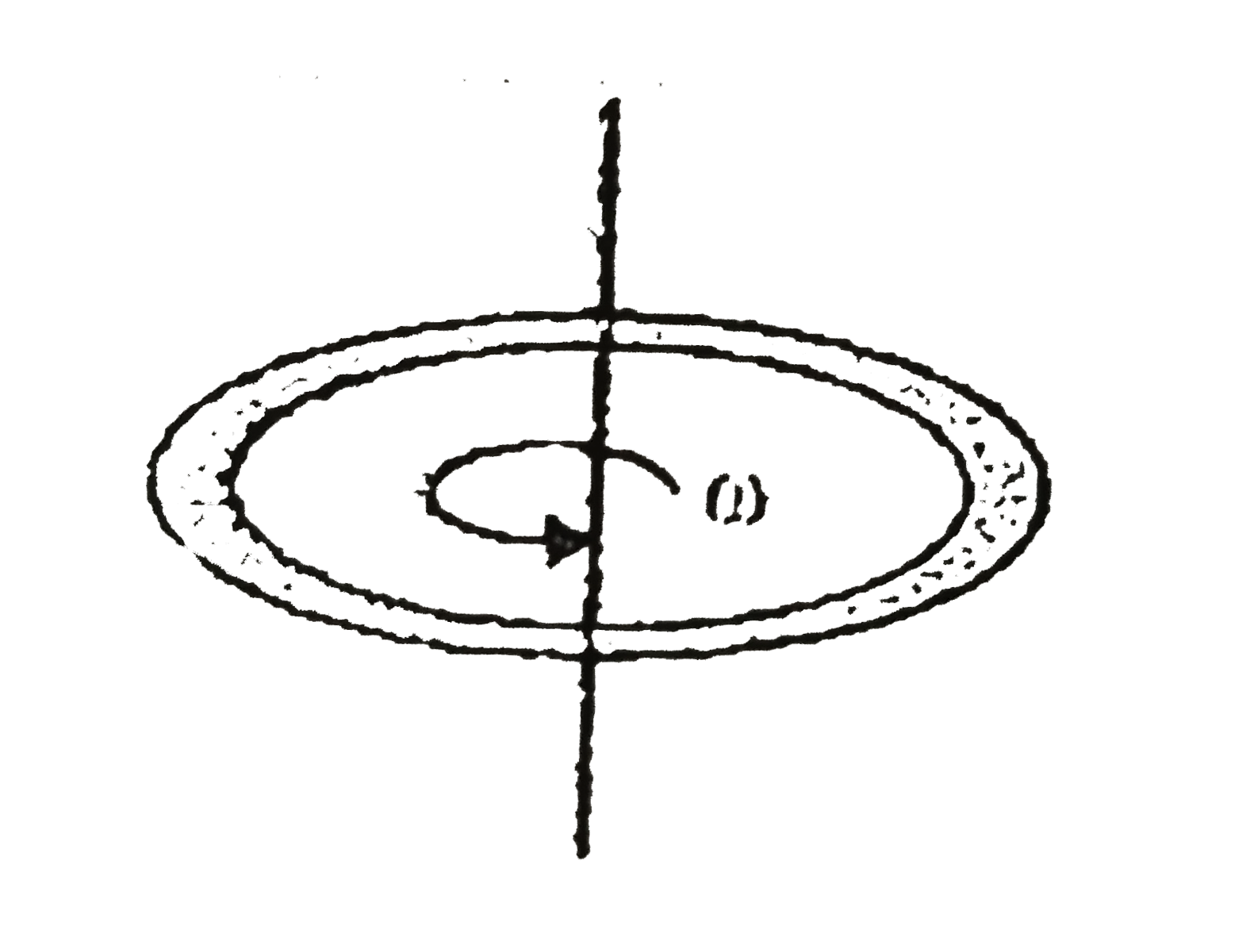There object, A : (a solid sphere), B : (a thin circular disk) and C : (a circular ring), each have the same mass M and radius R. They all spin with the same angular speed ω about their own symmetry axes. The amount of work (W) required ot bring them to rest, would satisfy the relation
WC>WB>WA
WA>WB>WC
WB>WA>WC
WA>WC>WB
The correct Answer is:A
From work energy theorem Work done (W)=Δk=12Iω2
Moment of inertia of solid sphere (IA)=25MR2=0.4MR2
Moment of inertia of disc (IB)=MR22=0.5MR2
Moment of inertia of ring (IC)=MR2)
Hence HC>WB>WA
Topper's Solved these Questions
- ROTATIONAL MOTIONBOOK - ERRORLESSCHAPTER - ROTATIONAL MOTIONEXERCISE - ASSERTION AND REASON
25 Videos
- ROTATIONAL MOTIONBOOK - ERRORLESSCHAPTER - ROTATIONAL MOTIONEXERCISE - NCERT BASED QUESTIONS (Torque and Couple)
27 Videos
- ROTATIONAL MOTIONBOOK - ERRORLESSCHAPTER - ROTATIONAL MOTIONEXERCISE - NCERT BASED QUESTIONS (Rolling on Inclined Plane)
54 Videos
- NEWTON'S LAWS OF MOTIONBOOK - ERRORLESSCHAPTER - NEWTON'S LAWS OF MOTIONEXERCISE - ASSERTION & REASON
18 Videos
- SIMPLE HARMONIC MOTIONBOOK - ERRORLESSCHAPTER - SIMPLE HARMONIC MOTIONEXERCISE - Assertion & Reason
15 Videos
Similar Questions
A thin circular right of mass M and radius R is rotating about its axis with an angular speed ω0 two particles each of mass m are now attached at diametrically opposite points. Find new angular speed of the ring.
View SolutionA thin circular ring of mass M and radius r is rotating about its ais with an angular speed ω. Two particles having mas m each are now attached at diametrically opposite points. The angular speed of the ring will become
View Solution
Knowledge Check
Three objects , A : (a solid sphere) , B : (a thin circular disk ) and C : (a circular ring) , each have the same mass M and radius R . They all spin with the same angular speed ω about their own symmetry axes . The amounts of work (W) required to bring them to rest , would satisfy the relation .
AWC>WB>WABWA>WB>WCCWB>WA>WCDWA>WC>WBThere object, A : (a solid sphere), B : (a thin circular disk) and C : (a circular ring), each have the same mass M and radius R. They all spin with the same angular speed ω about their own symmetry axes. The amount of work (W) required ot bring them to rest, would satisfy the relation
AWB>WA>WCBWA>WB>WCCWC>WB>WADWA>WC>WBA thin circular ring of mass per unit length p and radius r is rotating at an angular speed ω as shown in figure. The tension in the ring is
 Apω2r2/2Bpω2r2Cpω2r2/3DNone
Apω2r2/2Bpω2r2Cpω2r2/3DNone
A thin circular ring of mass M and radius R is rotating about its axis with a constant angular velocity omega. Four objects each of mass m, are kept gently to the opposite ends of two perpendicular diameters of the ring. The angular velocity of the ring will be
View SolutionA thin circular disk of radius R is uniformly charged with density σ>0 per unit area.The disk rotates about its axis with a uniform angular speed ω.The magnetic moment of the disk is :
View SolutionA thin circular ring of mass M and radius R is rotating about its axis with constant angular velocity ω. The objects each of mass m are attached gently to the ring. The wheel now rotates with an angular velocity.
View SolutionA thin circular ring of mass M and radius R is rotating about its axis with a constant angular velocity omega. Four objects each of mass m, are kept gently to the opposite ends of two perpendicular diameters of the ring. The angular velocity of the ring will be
View SolutionConsider a solid sphere of radius r and mass m which has a charge q distributed uniformly over its volume. The sphere is rotated about a diameter with an angular speed ω. The magnetic moment of the sphere is
View Solution
